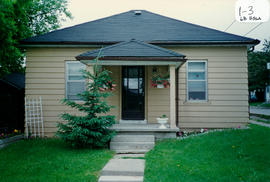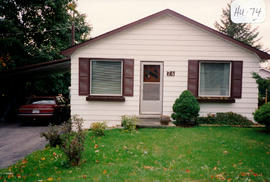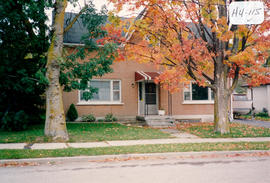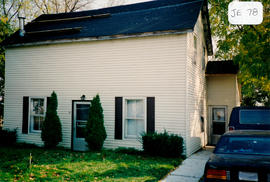- CA BWGPL GJ-HB-2017-03-21-04
- Item
- 1996
Parte de George Jackson fonds
The corner building located on the west side at 68 Essa St. was built pre-1900 in the Ontario Vernacular Cottage style. It was once the home of Alex Sutherland.
The one-storey, three-bay cottage has a rectangular plan with a centre hall. A box hall was typical for this style. It also has a symmetrical façade and a shallow-pitched, hip roof. The covered porch has a hip roof supported on simple, wooden posts. It is raised a few steps above grade. The entrance is simple with a single-door opening. There are single windows (with low floor to ceiling heights) to the primary rooms on each side of the porch. Ground-floor windows are double-hung. The house has wood frame construction, wood siding, and a parged, stone foundation. According to the 2000 inventory, this modest cottage probably had few decorative details originally. It also notes that other than the building’s form, few building elements appear to be original. Existing James Street appears to be built at a higher level than this lot. This indicates that the house was built before the street was paved or town services were installed. (1, 3)
Sem título










